What Is the State Insect of Missouri? How Was It Decided?
-
Lindsey Lawson
- Last updated:
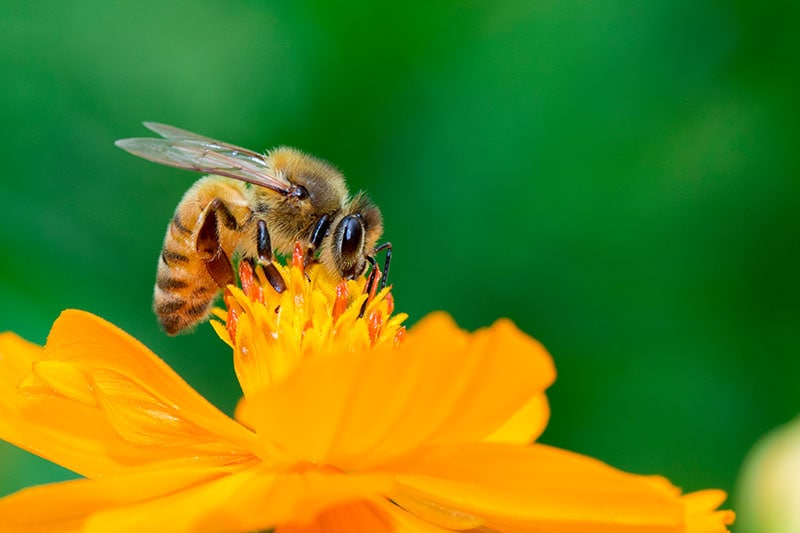
Missouri is a beautiful state with a lot to offer. Most think of the iconic Gateway Arch, which represents Missouri’s role in the westward expansion, but this place has plenty of natural beauty and a lot of history.
State symbols are chosen to capture the importance of certain items and living things and the impact they have on their state. As far as the state insect, the “Show Me” state is represented by the honeybee. Keep reading to learn about why the elected officials made this decision and to learn more about these incredible insects and their role in the state of Missouri.
How the Honeybee Became the State Insect of Missouri
The honeybee was approved as Missouri’s state insect on July 3, 1985, and it became effective as of August 28, 1985. Governor John Ashcraft signed the bill designating the honeybee as an official state symbol because of the impact they have on Missouri agriculture.
Like most Midwestern states, agricultural production is of the utmost importance. The economic value of agriculture in the Midwest includes livestock, corn, grains, soy, vegetables, fruits, tree nuts, berries, and greenhouse plants.
Honeybees may not be native to the United States, but they are now a very important part of our ecosystem. Many other states besides Missouri have also declared these bees as the state insect.
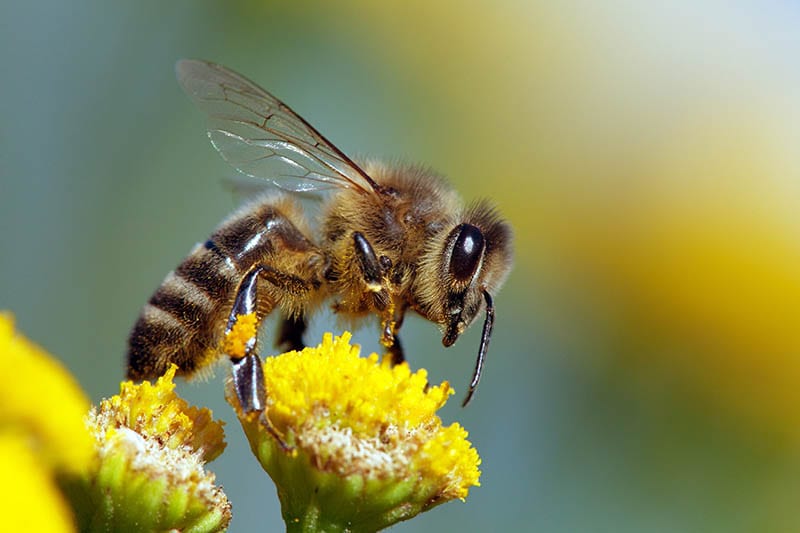
Other States That Named the Honeybee the State Insect
Tennessee has named the honeybee as their state agricultural insect and Texas considers them their official state pollinator but quite a few others have named them as the official state insect. In addition to Missouri, here’s a look at the other states that consider the bees their state insect and the years it became effective for each.
- Arkansas (1973)
- Georgia (1975)
- Kansas (1976)
- Kentucky (2010)
- Louisiana (1977)
- Maine (1975)
- Mississippi (1980)
- Nebraska (1975)
- New Jersey (1974)
- North Carolina (1973)
- Oklahoma (1992)
- South Dakota (1978)
- Tennessee (1990)
- Utah (1983)
- Vermont (1978)
- West Virginia (2002)
- Wisconsin (1977)
The Honeybee
| Species: | Apis mellifera |
| Size: | 9-20mm |
| Diet: | Nectar, pollen |
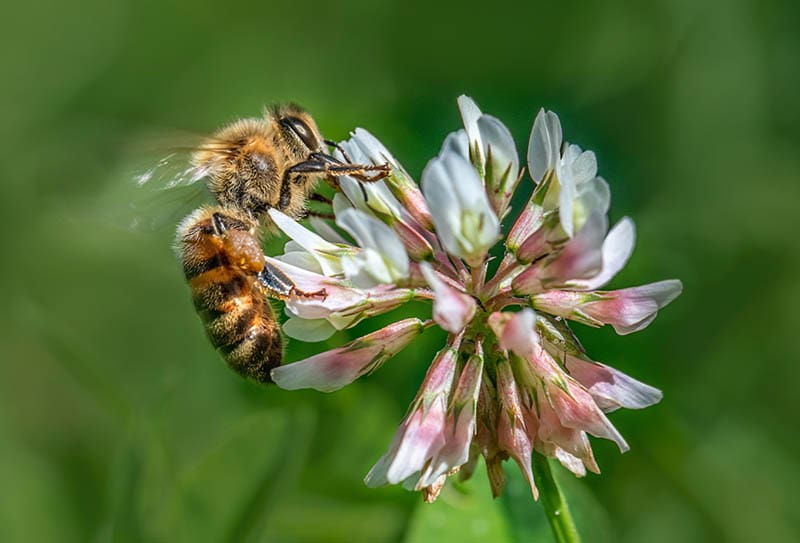
It is believed that honeybees were native to Africa but today they are found on every continent except for Antarctica. Their history in the United States began in 1622 when European settlers brought the bees along to the new world to provide honey, and wax, and to pollinate their crops.
It took a while for the bees to span from the east to the west coast of the United States, but by 1853 the first honeybees were documented in the state of California. There may be over 20,000 bee species worldwide, but honeybees make up part of the 5 percent of bees that are social and live and work together in colonies.
Appearance
Honeybees are recognized by their yellow to orange and black striped coloration and their thick, oval-shaped bodies. They are covered in branched and unbranched hairs that serve as sensory organs and work for pollen removal.
Honeybees have six legs, wings, antennae, and a stinger that is used for defense. These are the only bees that will die if they deploy their stingers. Therefore, honeybees primarily only sting to protect the hive. For the most part, if a bee is collecting pollen or nectar away from the hive, it will refrain from stinging unless handled in a way they perceive as threatening.
If a threat to the hive is present, the honeybees will give up their lives to protect the colony. They are unable to retract their stingers like other species, therefore when the stinger is used, it takes part of the digestive tract, muscles, and nerves along with it.
Habitat
Honeybees carefully choose areas that can support their hive. The hives are typically constructed in hollow trees, logs, or various human structures. Domestic honey bees are farmed in manufactured environments that work well for the bees and the safety of their keepers.
The size of a colony will vary, but they generally house anywhere from 20,000 to 80,000 bees. Farmed hives are typically kept at no more than 20,000.
They are very adaptable insects, which is why they can be found worldwide in various climates. They are most often seen in areas thick with flowering plants like gardens, meadows, forests, and orchards. Unless you stumble upon a hive, you are much more likely to come across the worker bees collecting pollen and nectar to take back to the hive.
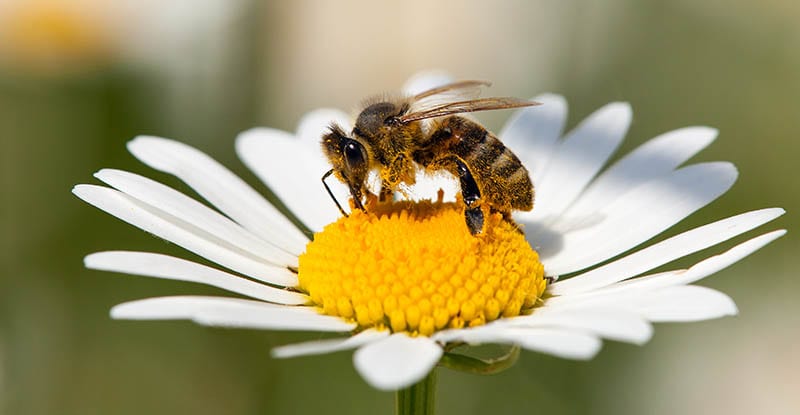
A Honeybee’s Diet
Worker honeybees will collect pollen and nectar from various flowering plants in the area. They collect as much as they can store in their crop, or honey sack then returns to the hive.
Once they are back in the hive, they will regurgitate the nectar and pass it along to others within the colony, ultimately turning it into honey. The honey is stored in cells within the hive and is used to maintain the colony and feed larvae.
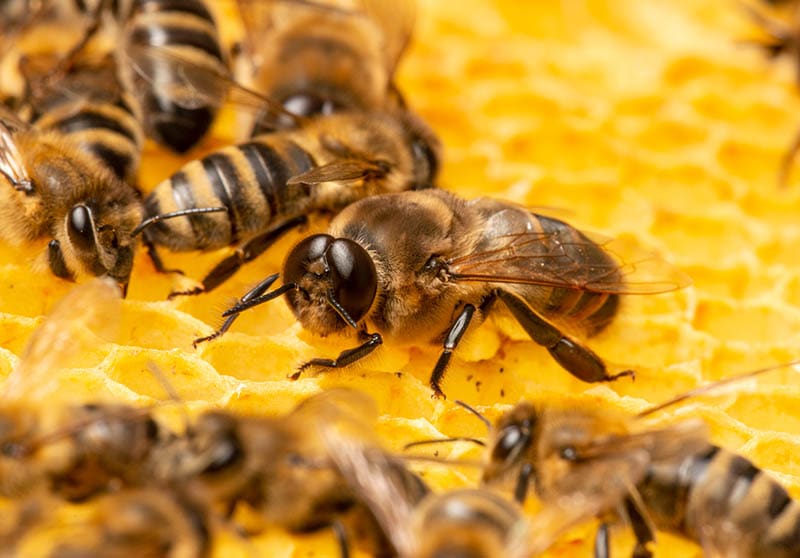
Life Cycle and Behavior
Honeybees are broken down into three different categories and each has a unique role. The categories include queen, worker, and drone bees. Each goes through a four-stage life cycle which consists of egg, larva, pupa, and adult.
The life cycle from egg to adult ranges between each category. Queens take about 16 days, workers 18 to 22 days, and drones will mature in about 24 days. Once they reach their adult stage, queen bees can live from 1 to 2 years, worker bees about 15 to 38 days during summertime or up to 200 during wintertime, and drones are only expected to live about 55 days or less regardless of the season.
The queen of the colony lays about 2,000 to 3,000 eggs per day in the cells of the hive. Fertilized eggs develop into female worker bees. The unfertilized eggs will become male honeybees, which are known as drones. During the larval stage, the differences between the queen, worker, and drone take place.
A honeybee will have wings, eyes, legs, and small hairs once they reach the pupa stage and at this time they will be much like adults. It’s not until they fully mature into an adult that they’ll chew out of their cell and take on their role within the hive.
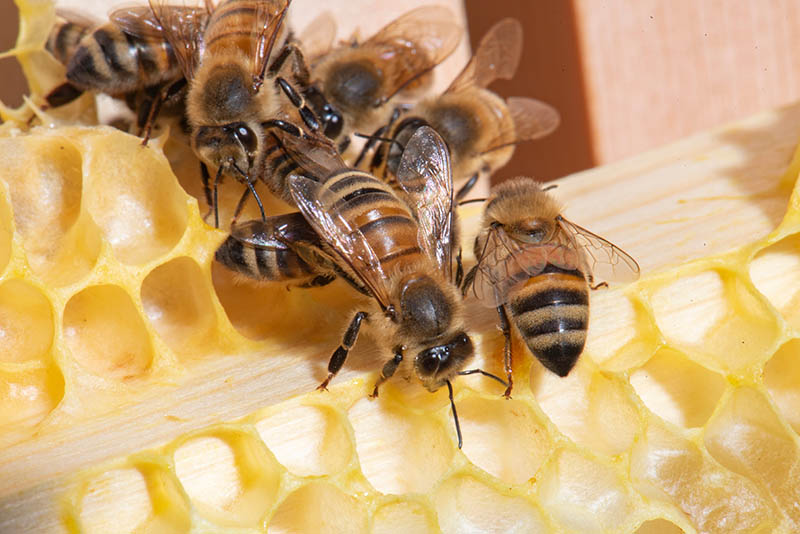
The Importance of Honeybees in Missouri’s Agriculture
Pollination is the transfer of pollen from the anther of a plant to the stigma of a plant, which enables fertilization and seed production. This process most often takes place through animals or by the wind.
Honeybees are the most important pollinators in the United States. These bees alone pollinate 80% of all flowering plants, which is why they are so important to Missouri and many other states for agricultural production.
Missouri is a state that has a very diverse terrain and while Missouri farmers grow a wide variety of crops, soybeans are the state’s biggest agricultural commodity. It has been proven that honeybees can improve soybean yields by upwards of 20% when assisting in the pollination of soybean plants.
Their financial agricultural benefit is estimated to be 10 to 20 times more than that of honey and beeswax combined. According to the data, honey bees account for around 15 billion dollars in added crop value.
 Conclusion
Conclusion
Governor John Ashcraft signed a bill declaring the honeybee as Missouri’s official state insect in 1985. This Midwestern state plays a huge role in agriculture and the benefits of having honey bees around to pollinate various plants go unmatched and help Missouri farmers yield more crops. These bees aren’t just important to the Show Me state, but many others across the nation rely on them for this reason.
- https://www.sos.mo.gov/symbols
- https://dem.ri.gov/sites/g/pwg_presentation_pollinator_djoslin.pdf
- https://www.news.iastate.edu/news/2021/05/25/soybeanyieldspollinators
- https://www.farmers.gov/blog/value-birds-and-bees
- https://www.fda.gov/animal-veterinary/animal-health-literacy/helping-agricultures-helpful-honey-bees
Featured Image Credit: Yod 67, Shutterstock
Contents
